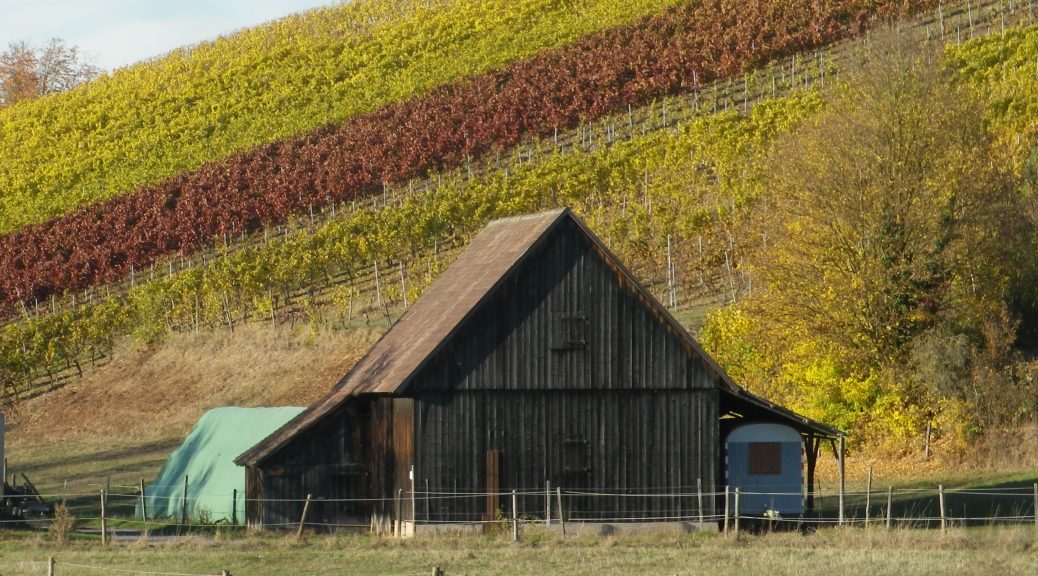German wine is well known. As are German woods and forests: The Odenwald, and the Black Forest (Schwarzwald, in German), to name a couple of famous ones. So, when I found a circuit trail entitled Wein und Wald Runde (roughly translated as Wine and Woods Circuit), I really looked forward to cycling it.
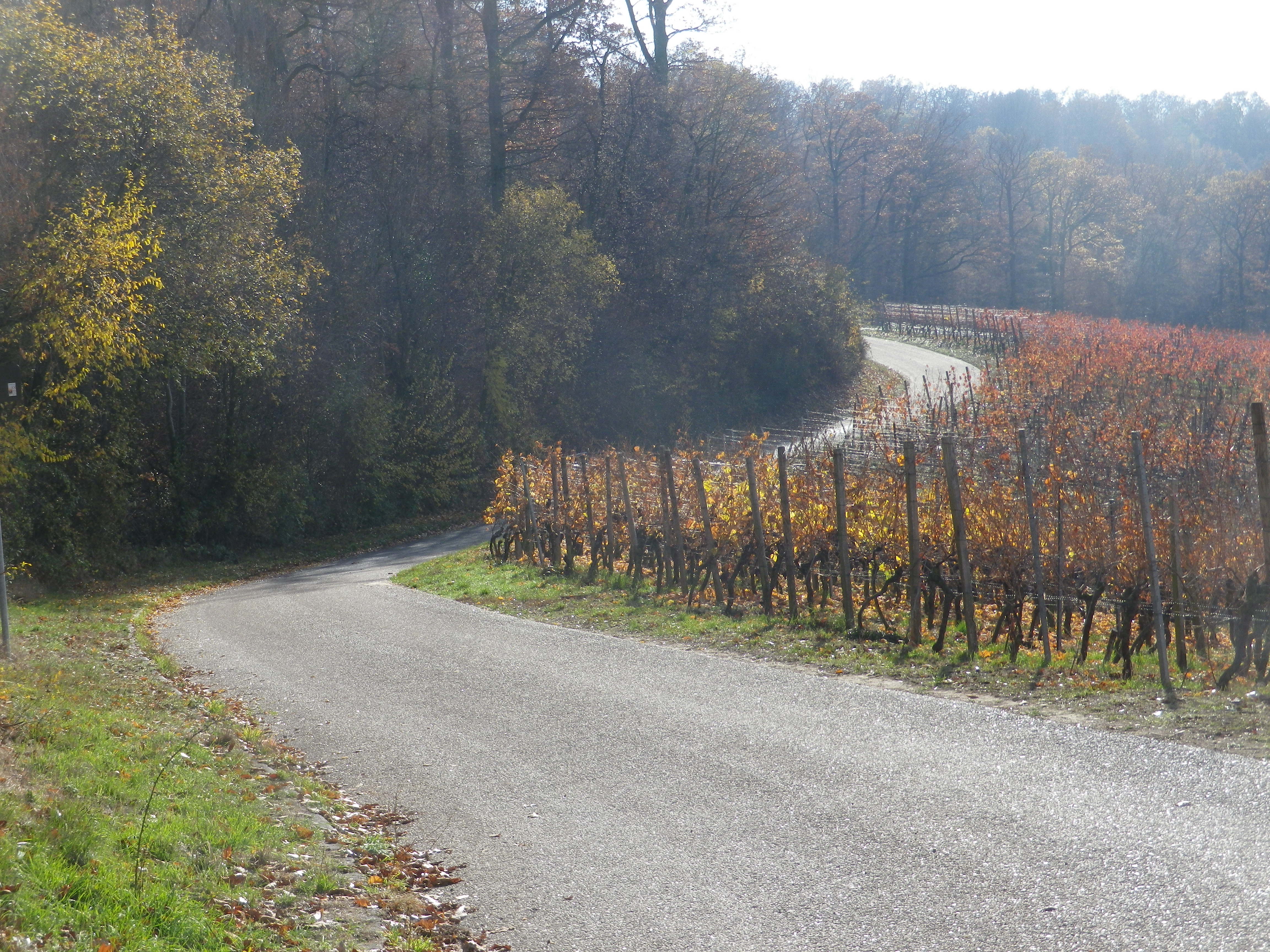
One absolutely gorgeous autumn day came my way during my vacation in Stuttgart. The vineyard harvests had just ended for the most part, meaning no congestion along the vineyard trails. Perfect, I thought, as I arranged to bike the circuit later that afternoon. From my start point at the nice parking area by the lovely town park in Abstatt, to the beautifully maintained bike trail through the valley to Oberheinriet, I was absolutely enthralled. Leaves on trees and vines were often a bright, eye-catching yellow, especially when seen against a big-sky-blue backdrop. Now comes the whine part, but also a cultural lesson on what to expect in German woods.
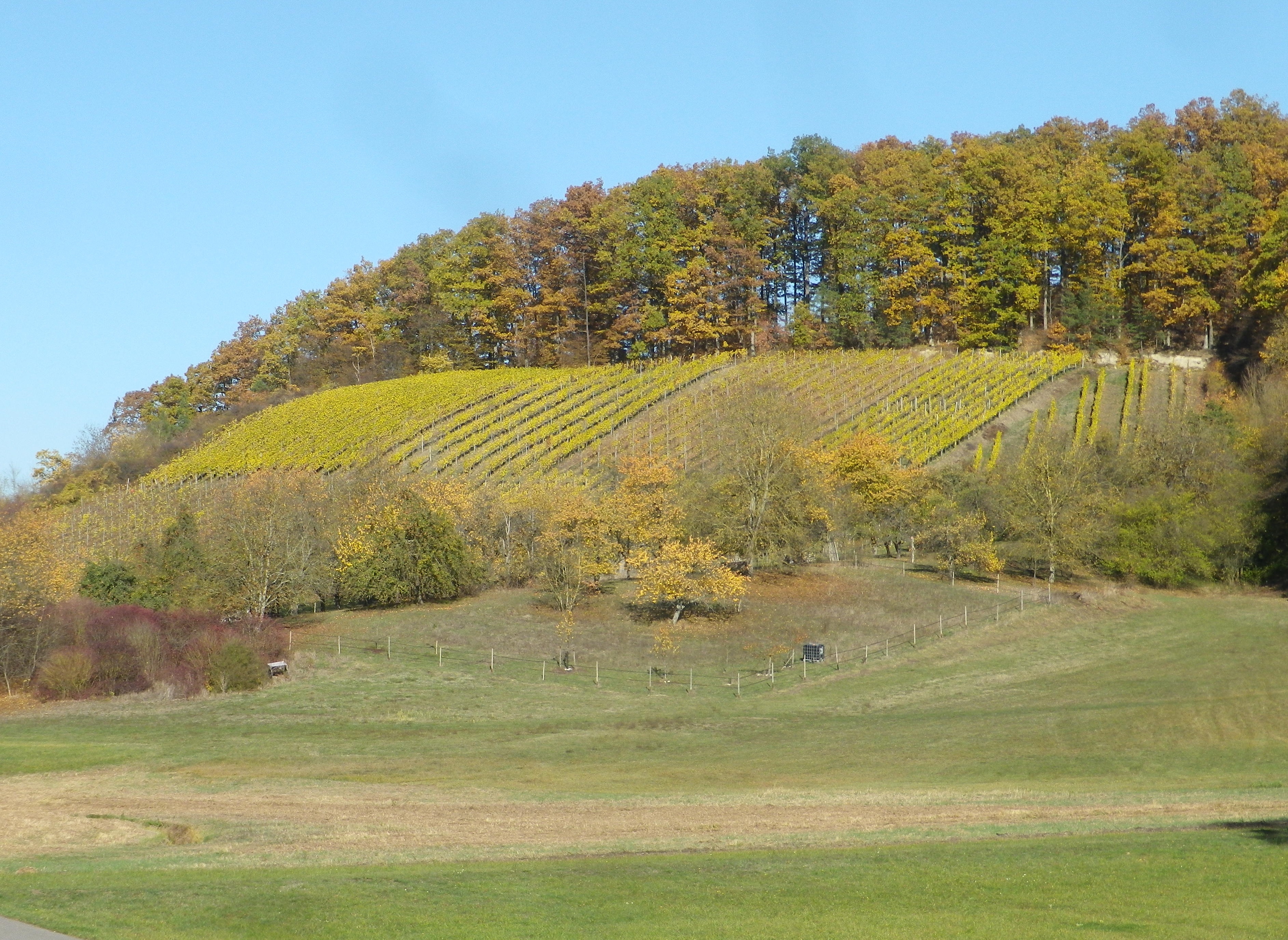
Visitors to German woods and forests are usually amazed at how pristine they are. Not just the trails, which are also amazing: like clear, well-marked roads from point A to point B. No, I am talking the woods themselves. Trees are tall and straight, leaf litter stays neatly away from trails, no tree limbs block the trails, invasive vines or plant species are kept at bay. But all this comes at a cost. In the interests of maintaining a healthy environment, the German taxpayer willingly funds the work of the Forstmeisters (forest masters) in most every German city or town, and just about every German city or town has a forest for all to use. Each Forstmeister regularly checks his section of woods or forest, identifies health or safety issues (for the trees of the forest), and takes steps to resolve those issues. He hires crews to cut aging or ill trees, and thin out overgrowth. Most of this activity occurs in late October, November or early December. When it begins, certain parts of the forest are shut down. Tree falling is dangerous, so the Forstmeister is serious about closing the woods. (People like me who think they can sneak around the workers are wrong – they can’t.)
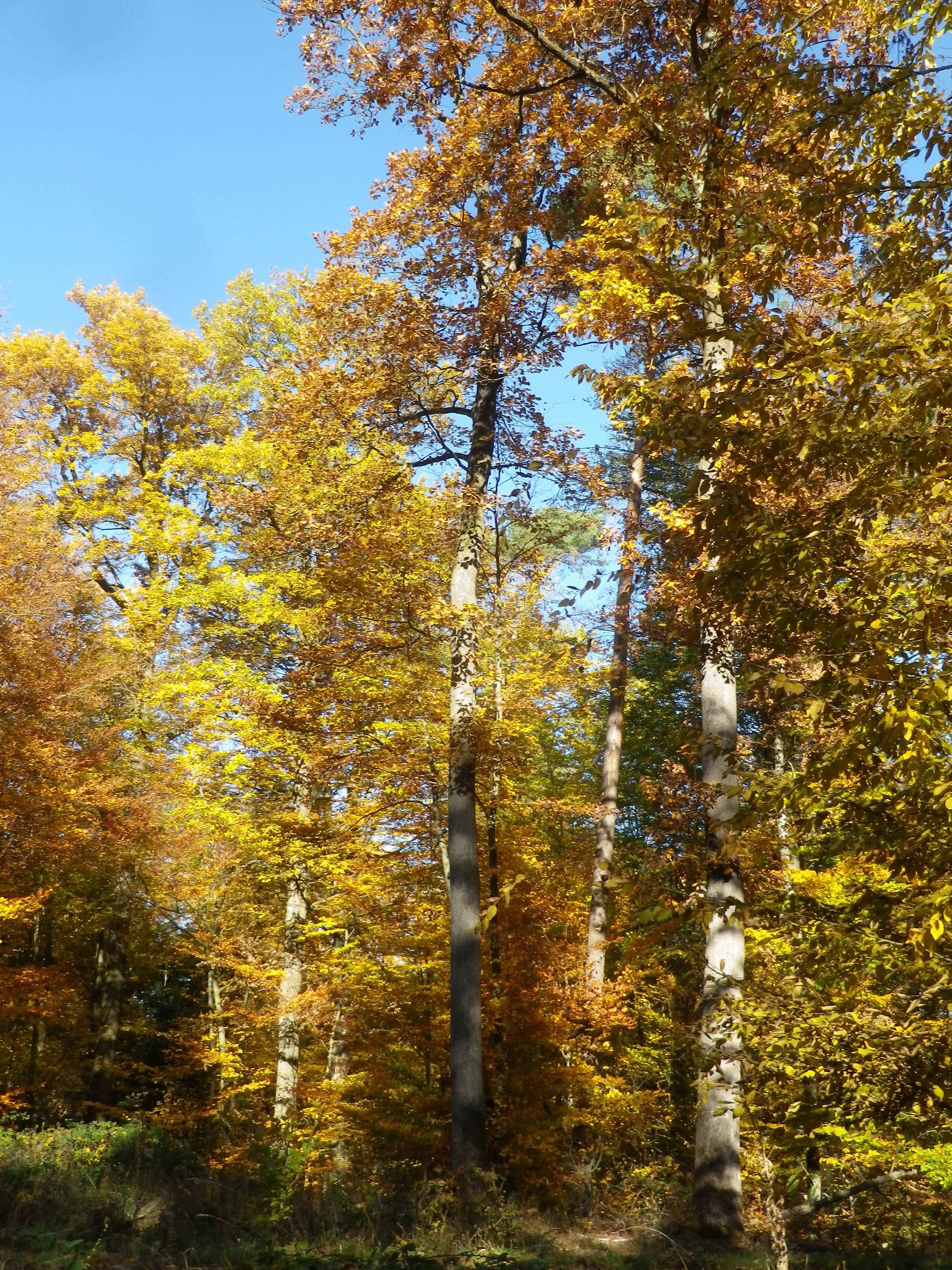
So far, no complaint, and I made a major detour, on a main road almost back to Abstatt. But, after the vineyards by Flein, when I came to another closed section by Ilsfeld, I resigned myself to having to return another time. After all, this circuit does focus on woods as well as wine, so I hated to miss half of the experience. My only complaint was that the closures don’t seem to be posted in township or city websites. I waited until the end of November to be sure I could ride through the woods, and by the time I did, winter weather had made its first appearance.
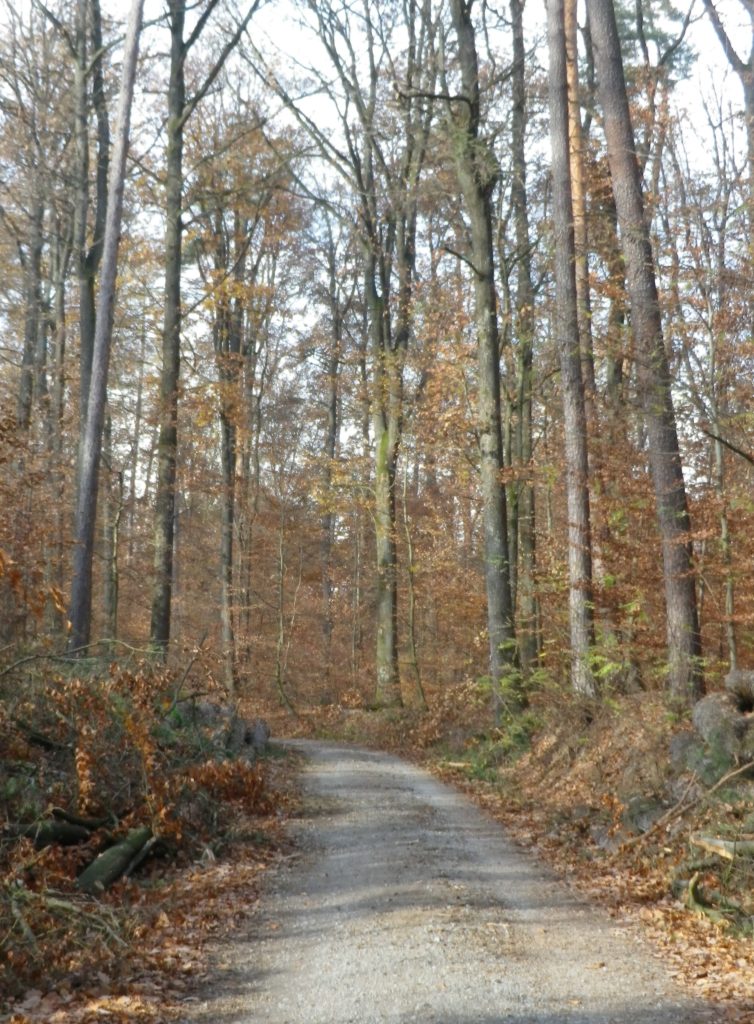
That is why you might notice a difference in the photos. The stark look of December had begun to replace the bright colors of fall vegetation. I might as well add that there were fewer photos that day too. It was just a couple of degrees above freezing, and my mind rebelled against putting fingertips on the camera’s ice-cold metal frame.
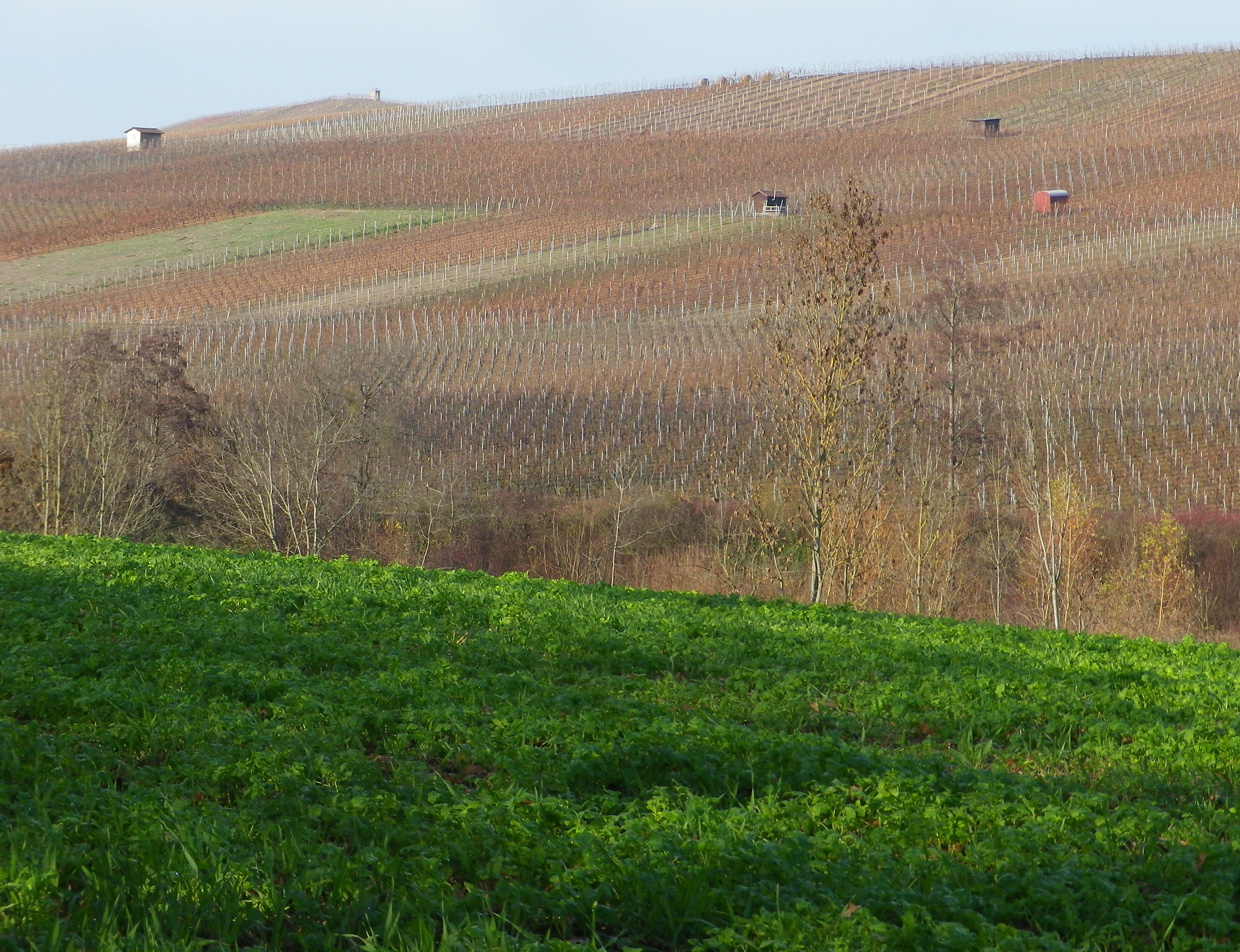
In retrospect, it was good to have returned. The wooded section of this itinerary is large, only a bit less than half the circuit, and it is beautiful. Cycling through the still woods on such smooth, earthen surfaces, with dappled winter sunlight for illumination, was a thoroughly enjoyable experience. It was a very peaceful one at that, also helped by a woolen hat, pulled low over my cold ears, to muffle any noise.
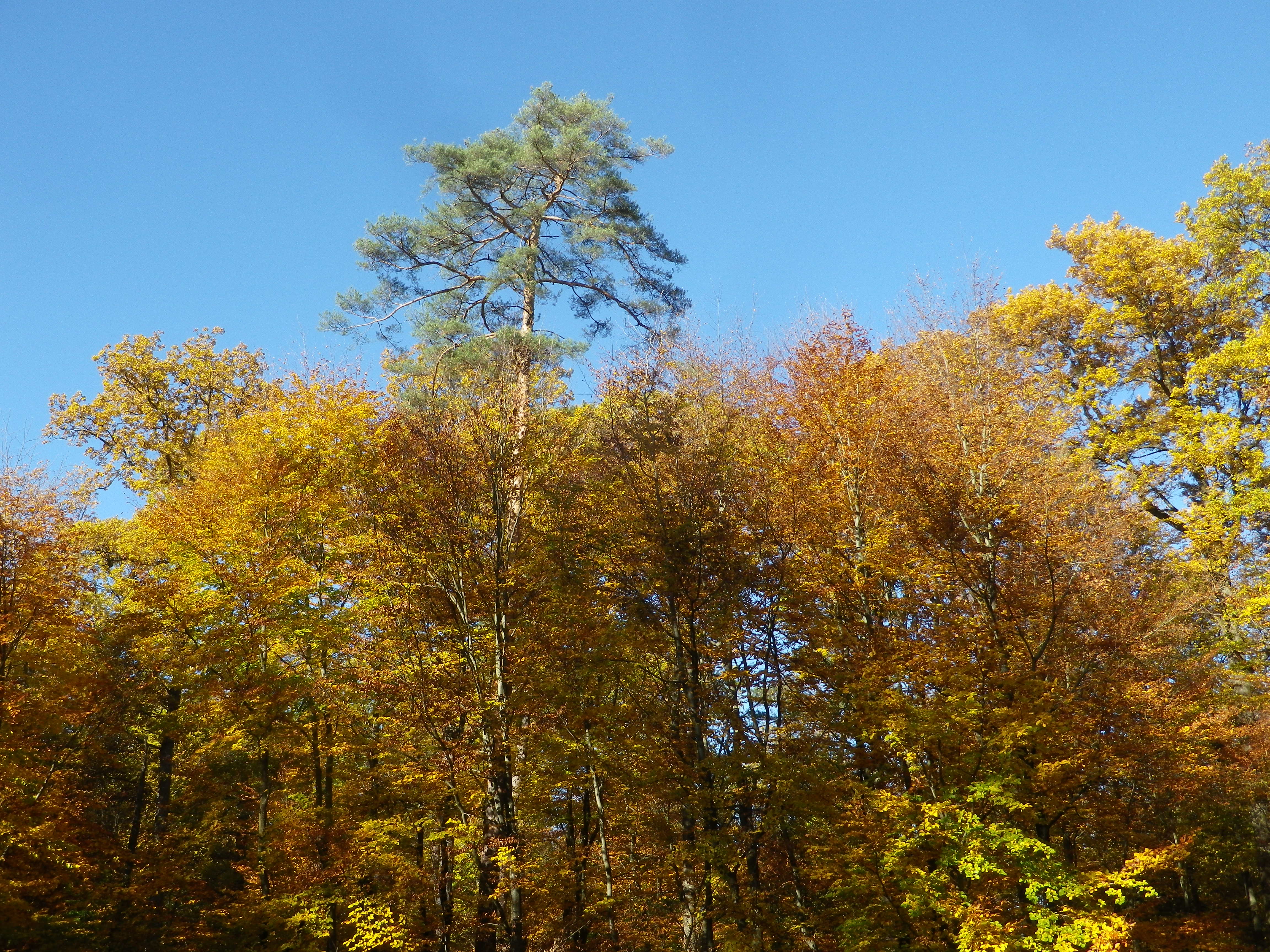
Thawing out later with a traditional German Erbseneintopf (a hearty split pea stew), and a glass of rich red wine from Flein (see Wine Notes here), I sadly realized this would likely be the last cycling adventure of the season, but I enthusiastically began planning itineraries for the coming year.
